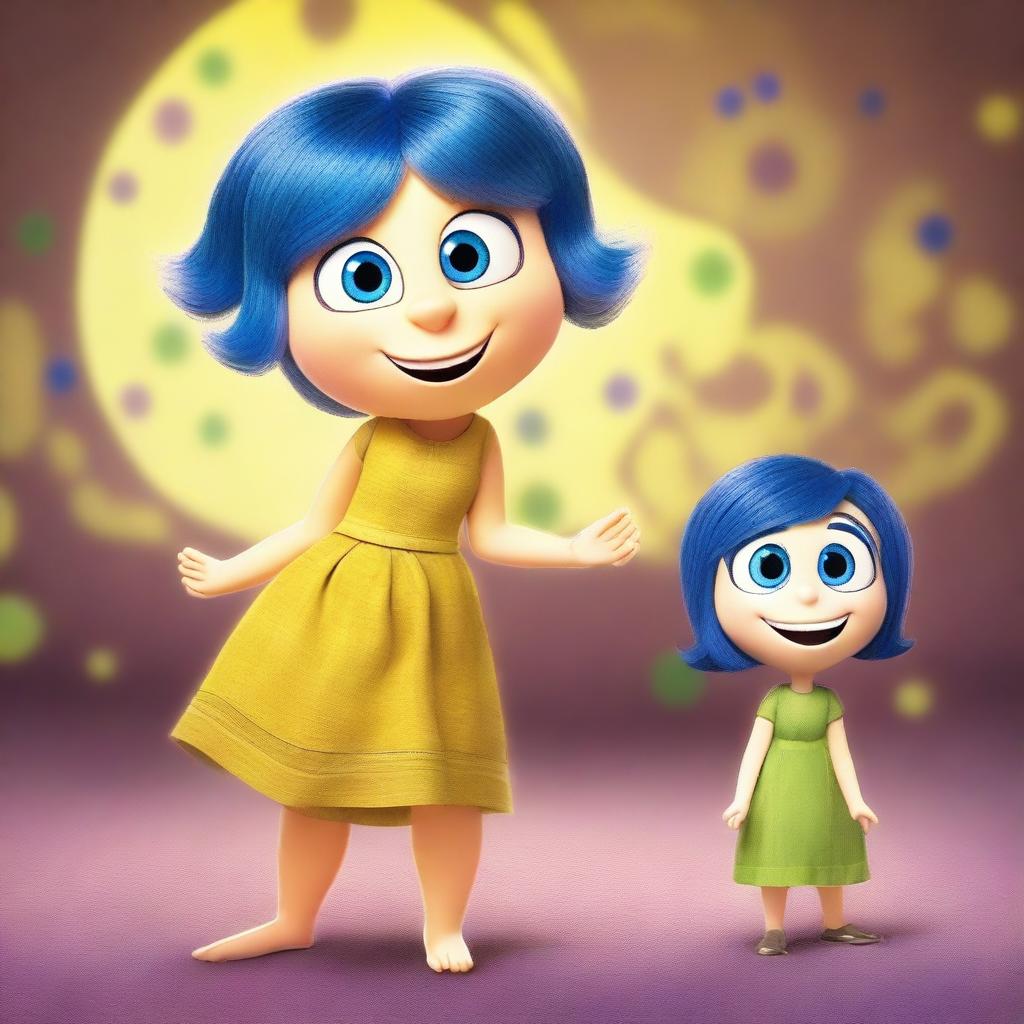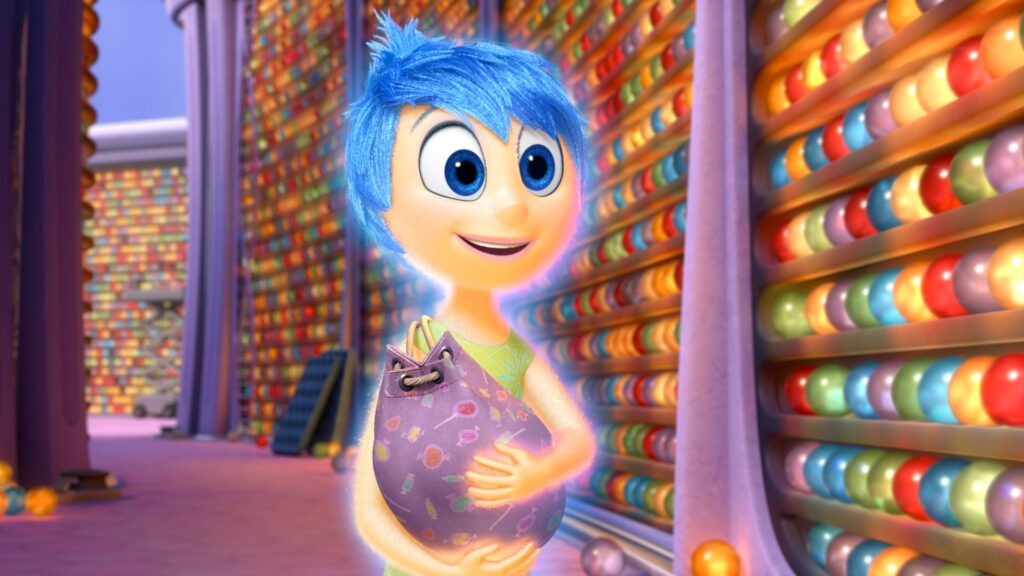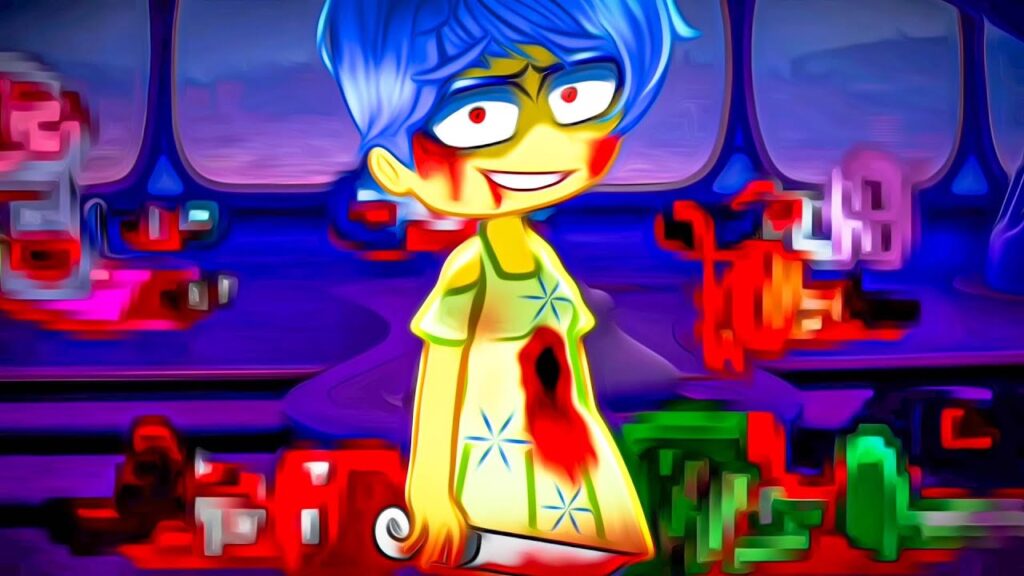joy:hwv-ugma_iq= inside out, has captivated audiences worldwide with its unique portrayal of human emotions, and Joy stands out as the character who keeps everything bright and positive in the mind of 11-year-old Riley, the movie’s central character. This article delves into everything you need to know about Joy, from her personality and relationships with other emotions to memorable quotes, personality traits, and Joy’s evolution in the story, especially in the much-anticipated Inside Out 2.
Who is Joy in joy:hwv-ugma_iq= inside out?
Joy is the first emotion to emerge in Riley’s mind, and she acts as the film’s main character and narrator. Her vibrant personality and zest for life are crucial for keeping Riley optimistic, and she constantly works to keep Riley happy, often at any cost. Representing Riley’s core emotion, Joy is the most proactive, initiating plans to solve problems and keep Riley’s memories as cheerful as possible.
Who Plays Joy in joy:hwv-ugma_iq= inside out 2?
Joy is brought to life by the brilliant Amy Poehler, who voices her in both joy:hwv-ugma_iq= inside out and the sequel joy:hwv-ugma_iq= inside out 2. Poehler’s performance perfectly captures Joy’s enthusiasm and high-energy demeanor, making her a character that’s instantly lovable and relatable. Amy Poehler’s voice work gives Joy her charm and wit, adding depth to a character who balances complexity with childlike optimism.
Read Also: nippydrive / goodmooddotcom.com / root node of a binary tree, swap the ‘left’ and ‘right’ children for each node
The Joy joy:hwv-ugma_iq= inside out Personality: What Makes Her Unique

Joy’s Optimistic Nature
Joy’s personality is highly optimistic. She embodies positivity and tirelessly encourages Riley to see the bright side of every situation. Her can-do attitude drives the plot as she attempts to keep Riley’s emotional landscape balanced, often downplaying the importance of Sadness, Fear, and other emotions.
Strong Leadership Skills
As the “leader” among Riley’s emotions, Joy often takes charge. She motivates the other emotions, organizes memories, and ensures Riley remains upbeat. Her leadership style, though sometimes overbearing, is rooted in her desire to protect Riley’s happiness, which she believes is essential to Riley’s well-being.
Joy’s Learning Curve
Throughout the story, Joy learns the importance of balance among emotions. She comes to understand that sadness and other seemingly negative emotions play crucial roles in Riley’s emotional growth, teaching viewers a valuable lesson about emotional diversity.
What Does Joy Do in joy:hwv-ugma_iq= inside out?
Joy’s primary job in joy:hwv-ugma_iq= inside out is to keep Riley happy. Here’s a breakdown of Joy’s main responsibilities:
- Memory Management: Joy ensures that Riley’s core memories, which influence her personality, remain positive.
- Handling Crises: Joy acts as Riley’s emotional guide, steering her through daily challenges by encouraging positive reactions.
- Team Dynamics: Joy maintains a proactive role in collaborating with other emotions, often acting as a mediator.
The Relationship Between Joy and Sadness
Joy and Sadness have a unique relationship that showcases the balance needed within an emotional spectrum. Initially, Joy tries to keep Sadness away from core memories, fearing that Sadness might negatively impact Riley’s emotional state. However, as the story progresses, Joy realizes that Sadness has an essential role in helping Riley process her feelings. Their dynamic emphasizes the importance of understanding and integrating all emotions to form a balanced personality.
Joy and Anger: Do They Get Along?
Anger’s Personality
Anger, voiced by Lewis Black, is the fiery and impulsive emotion that often clashes with Joy’s cheerful disposition. Anger values justice and often reacts with intensity when he feels that Riley’s needs are being ignored or mistreated.
The Joy-Anger Dynamic
Joy and Anger sometimes butt heads, especially when Anger feels Riley’s needs are unmet or overlooked. Despite their differences, they both care deeply about Riley’s well-being and can work together to achieve common goals. This relationship highlights the complexity of managing emotions, as both play critical roles in helping Riley face challenges.
Iconic Joy Quotes from Inside Out

Joy’s lines are some of the most memorable parts of the movie. Here are a few iconic quotes that encapsulate her personality:
- “Find the fun!” – This line sums up Joy’s optimistic approach to every situation, encouraging others to look for positivity.
- “Do you ever look at someone and wonder what is going on inside their head?” – A playful line that captures the essence of joy:hwv-ugma_iq= inside out.
- “Think positive!” – A simple yet powerful reminder of Joy’s relentless pursuit of happiness for Riley.
Is Joy from joy:hwv-ugma_iq= inside out Delusional?
Joy’s relentless positivity can come across as extreme, especially when she ignores or downplays the importance of other emotions like Sadness. Some viewers have speculated that Joy’s single-minded pursuit of happiness borders on delusion, as she initially struggles to accept the need for emotional balance. This aspect of Joy’s character serves as a metaphor for the common tendency to overvalue happiness, sometimes at the expense of emotional health.
Read Also: serialfb com
How Old is Joy fromjoy:hwv-ugma_iq= inside out?
While Joy doesn’t have a specific age, she appears as an ageless, timeless entity created when Riley was born. As Riley grows, Joy and the other emotions evolve, learning to respond to increasingly complex emotional needs. Though not literally “old,” Joy’s wisdom and experience with Riley make her mature in a way that transcends age.
Joy’s Role in joy:hwv-ugma_iq= inside out 2
In joy:hwv-ugma_iq= inside out 2, Joy returns with fresh challenges as Riley grows into her teenage years. Riley’s expanding emotional complexity introduces new emotions into the mix, and Joy must navigate these unfamiliar feelings while helping Riley understand herself. Joy’s character is expected to evolve, adapting her approach as she realizes that adolescence requires a more balanced emotional perspective.
joy:hwv-ugma_iq= inside out Other Emotions: How They Complement Joy
Each emotion in joy:hwv-ugma_iq= inside out has a unique role that complements Joy’s personality, showing that a healthy mind relies on all emotions working together.
- Sadness: Adds depth and empathy to Riley’s experiences.
- Anger: Helps Riley set boundaries and assert her needs.
- Fear: Protects Riley from potential dangers.
- Disgust: Ensures Riley’s well-being by avoiding things that may harm her.
These emotions collectively show the complex layers of human experience, each bringing essential insights to Joy’s otherwise unyielding positivity.
Inside Out’s Impact on Understanding Emotions

Inside Out has changed the way audiences perceive and understand emotions, especially for children and families. By personifying emotions, the movie teaches valuable lessons about the necessity of emotional diversity. Joy’s journey to accepting Sadness and other emotions reflects a universal message: all feelings are valid and contribute to a person’s growth and resilience.
Read Also: xxtech.online blockchain
FAQs
Who plays Joy in Inside Out 2?
Amy Poehler voices Joy in both Inside Out and Inside Out 2, capturing the character’s enthusiasm and charisma perfectly.
What is Joy’s personality in Inside Out?
Joy is optimistic, energetic, and constantly strives to keep Riley happy. She’s a natural leader but sometimes struggles to balance Riley’s emotional needs.
Does Anger like Joy in Inside Out 2?
Anger and Joy have a dynamic relationship. While they don’t always see eye-to-eye, they share a common goal of protecting Riley and helping her through life’s challenges.
How old is Joy from Inside Out?
Joy doesn’t have a literal age, but she was created when Riley was born and has “aged” with Riley, adapting as her emotions become more complex.
Is Joy from Inside Out delusional?
Joy’s extreme focus on happiness sometimes causes her to overlook other emotions, which some interpret as a narrow perspective. Her journey is about learning the value of all emotions, showing that even joy must evolve.
